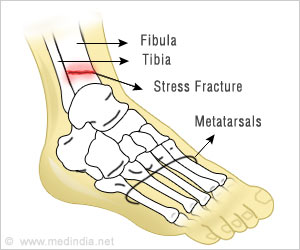
“No one is safe until everyone is safe,” stated Dr. Umesh Dahal, Director General of the Department of Livestock Services, Government of Nepal. He was highlighting the issue of antimicrobial resistance, (AMR) (1✔ ✔Trusted Source
Antimicrobial resistance
) where microbes (like bacteria, viruses, fungi, or parasites) no longer respond to medicines, making diseases increasingly hard or even impossible to treat.
The misuse and overuse of antimicrobial medicines are alarmingly high in human and animal health and agriculture, affecting the environment as well. As AMR rises, medications are becoming less effective in treating diseases across humans, plants, and animals.
Experts Urge Action to Prevent Anti-Microbial Resistance in South Asia
“AMR can be prevented,” said Dr. Palpasa Kansakar, World Health
Organization (WHO) National Professional Officer for AMR and
Laboratories in Nepal. Dr. Palpasa and Dr. Umesh were among the experts at
the South Asia Media Workshop to prevent AMR organised by Health TV
Online, Global AMR Media Alliance (GAMA), Ministry of Health and
Population of Nepal and partners.
“Universal access to high quality and affordable antimicrobials is an
essential component of universal health coverage,” said Dr. Palpasa.
She also pointed out that access to WHO recommended diagnostics and
standard treatments should also be ensured at all levels for everyone if
we are to deliver on universal health coverage.
Timely and accurate diagnosis and right treatment can help reduce misuse
and overuse of medicines. Infection prevention and control is vital too.
But reality on the ground tells a different tale.
Drug susceptibility test tells us if a medicine will work against a
disease-causing microbe or not. “Around 32% of doctors and other
healthcare workers have access to laboratory facilities that can test
for drug susceptibility test in their healthcare institutions and among
them, less than half (49%) recommend these tests before prescribing
medicines,” said Dr. Pramod Joshi, Executive Chief, Nepal Health
Research Council, Government of Nepal. This data is from a study done by
Nepal Health Research Council.
“This study also found that only half (54%) of the doctors and
healthcare workers had access to national guidelines for antibiotic
prescriptions. Almost half of the medicine-dispensers (43.4%) dispensed
antibiotics without prescription,” added Dr. Pramod Joshi. “Among
those patients who came to seek healthcare in outpatient clinics, 22% to
28% of them were found to buy antibiotics without prescriptions and did
not complete the full recommended course of antibiotics.”
Advertisement
The study referred to by Dr. Joshi also looked at antimicrobial use by
veterinary doctors. “One-third of veterinarians had access to drug
susceptibility testing facilities in their working areas. But only 32%
of them went for this test before prescribing antibiotics,” said Dr.
Pramod Joshi.
Antimicrobials are also used in food and agriculture. This study found
that “more than 50% of the farmers thought (wrongly) that
‘antibiotics can be used against all types of diseases in plants and
animals.’ Almost half of the farmers self-medicated their animals -
and two-thirds of them arbitrarily increased the dosage and frequency of
medication if no sign of improvement was noticed,” said Dr. Joshi.
Advertisement
The cost of AMR to the economy is significant. “According to a World
Bank report in 2017, if no action is taken now, AMR is likely to cause
additional health expenditure of US$ 1.2 trillion per year by 2050 and
push up to 24 million additional people (particularly in low-income
countries) into extreme poverty by 2030. AMR can directly affect
progress in achieving at least 6 of the 17 United Nations Sustainable
Development Goals and can also be linked indirectly to the remaining 11.
Moreover, the spread of new resistant strains of bacteria in terrestrial
and aquatic animals increases animal suffering and losses. This in turn
affects livelihoods worldwide, as 1.3 billion people rely on livestock
for their living and over 20 million people depend on aquaculture,”
said Dr. Joshi.
“If antibiotics lose their effectiveness, we lose the ability not only
to treat bacterial infections but also to manage other health
conditions. For example, modern medicine is often dependent on infection
prevention and control, and the ability to prevent and treat infections
using antimicrobials – such as during surgeries,” said WHO Nepal’s
Dr. Palpasa Kansakar. “We should only use antimicrobials when
prescribed by certified health professionals and never demand
antibiotics if our health workers say we do not need them. Please always
follow your health workers’ advice when using antibiotics.”
Agrees Dr. Sangeeta Mishra, Director General of Health Service
Department, Ministry of Health and Population, Government of Nepal: “We
have to educate the people to say NO to misuse and overuse of
antimicrobial medicines – without correct and timely diagnosis and drug
susceptibility testing, they should decline the indiscriminate use of
medicines.”
Dr. Mishra added that “Let us ask questions to doctors why are we being
prescribed antimicrobial medicines? Is the diagnosis accurate? Is drug
susceptibility test report there? We also need to do a reality check on
who should write a prescription. If a doctor is authorised to do so then
what happens to those who reside in remote areas where there is no
doctor?”
Media’s Crucial Role in Combating AMR: A Quadripartite Toolkit
Various forms of media help to shape public opinion, narratives and
discourse that affect public behaviour, knowledge, attitudes and
practice. Media also help to dispel myths and misconceptions, combat
misinformation and promote evidence- and science-based information.
Media were therefore identified as one of four priorities during two
global consultations for raising awareness about AMR, organized in 2022
by the Quadripartite organizations – the Food and Agriculture
Organization of the United Nations (FAO), United Nations Environment
Programme (UNEP), World Health Organization (WHO) and World Organisation
for Animal Health (WOAH). In response, the Quadripartite developed a
practical toolkit for engaging media in AMR and launched it last month.
A major share of those who deal with drug-resistant infections and
untimely deaths associated with AMR is attributed to TB (tuberculosis).
Drug-resistant forms of TB infected an estimated 410,000 people in 2022
globally as per the WHO Global TB Report 2023, informed Dr. Prajowl
Shrestha, Director of National TB Programme of Nepal. But only 43% of
them (176,650) were diagnosed and initiated on treatment in the same
year – or in other words, only 2 out of every 5 people with
drug-resistant TB could get diagnosed and put on treatment.
AMR threatens the effective prevention and treatment of an
ever-increasing range of infections. For instance, urinary tract
infections, upper respiratory tract infections, typhoid and influenza
are becoming difficult to treat, resulting in treatment failure,
permanent disability or even death. Bacterial resistance to antibiotics
directly caused 1.27 million deaths and indirectly caused, contributed
to or was associated with an additional 4.95 million deaths annually in
2019. The emergence of extensively drug- resistant gonorrhoea is another
major public health concern.
Strengthening infection prevention and control, along with boosting
access to standard quality diagnostics and treatments with equity
globally – especially in low- and middle-income countries – is vital to
curb AMR. Raising awareness and health literacy is a bedrock to advance
progress towards preventing AMR, as well as towards universal health
coverage.
Let us hope world leaders at next month’s United Nations General
Assembly High-Level Meeting on AMR will commit for stronger action to
effectively address the global health threat that AMR poses.
Reference:
- Antimicrobial resistance – (https://www.who.int/news-room/fact-sheets/detail/antimicrobial-resistance)
Source-CNS



